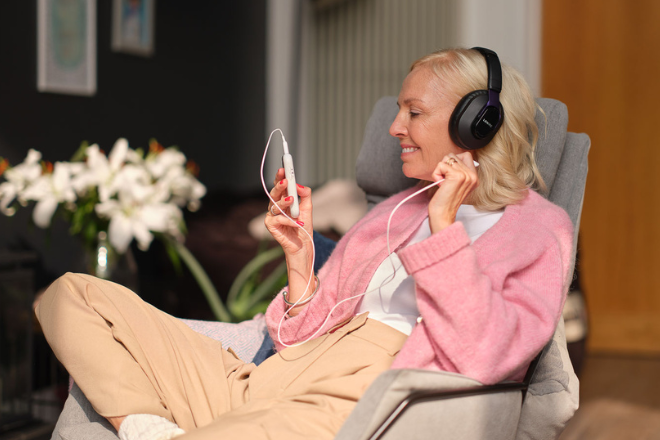For a long time, those with hearing impairments had a difficult time finding telephones that were designed with their needs in mind. Then, in 2011, new regulations made things easier.
New rules adopted by the Federal Communications Commission required cell phone manufacturers to design phones that are more useful for people who use hearing aids. Among other things, these rules required that phones have less static, less interference, and have better telecoil connections—all crucial features for compatibility with hearing devices.
Phone Label Designation
To find out if a cell phone is hearing aid compatible (HAC), look for the label in one of these places: on a card displayed next to the phone at the store, directly on the cell phone packaging, or in the phone’s user manual. If the label isn’t in any of these places, the phone is not hearing aid compatible.
Hearing Aid & Phone Ratings
Did you know phones and hearing aids have ratings based on how well they work with each other? First, it’s important to see if your hearing aid is compatible with the phone’s microphone. Hearing aids come with ratings from M1 to M4, with a higher rating meaning a clearer sound.
Cell phones that are hearing device-friendly have a microphone that will work with a hearing device in the microphone position. Look for microphone rations of M3 or M4, with higher numbers being better, because they offer a clearer sound.
Adding it All Up
To find out overall functionality of the hearing aid / phone system, all you have to do is add up the M or T ratings for the cell phone and the hearing aid.
- A combined rating of 6 is considered excellent, and means the hearing aid / phone system is a great match.
- A combined rating of 5 is considered average, and is acceptable for normal phone use.
- A combined rating of 4 is not great but is still usable. The quality may not be sufficiently high to comfortably conduct longer phone calls.
Cell phones that comply with the FCC’s hearing aid compatibility rule must receive a minimum rating of M3 for RF emissions and T3 for telecoil coupling. Ask your audiologist about the rating of your hearing aid.
How to Tell a Good Fit
Adding up the M and T ratings is fine as a general indicator of system compatibility, but it will ultimately be up to you, the user, to confirm that the system works well together. Conduct several test calls with the new phone in the types of environments you’re likely to find yourself in, and watch out for the following factors:
- Sound clarity
- Adjustability
- Any excessive static or extra noise on the line
- General ergonomics
- Other helpful features for those with hearing loss, including incoming call alerts, speech-to-text, and and easy-to-use accessibility menu
Have a question about the compatibility of a particular phone and hearing aid? We can help you make sense of the situation. Contact us today for more details.





